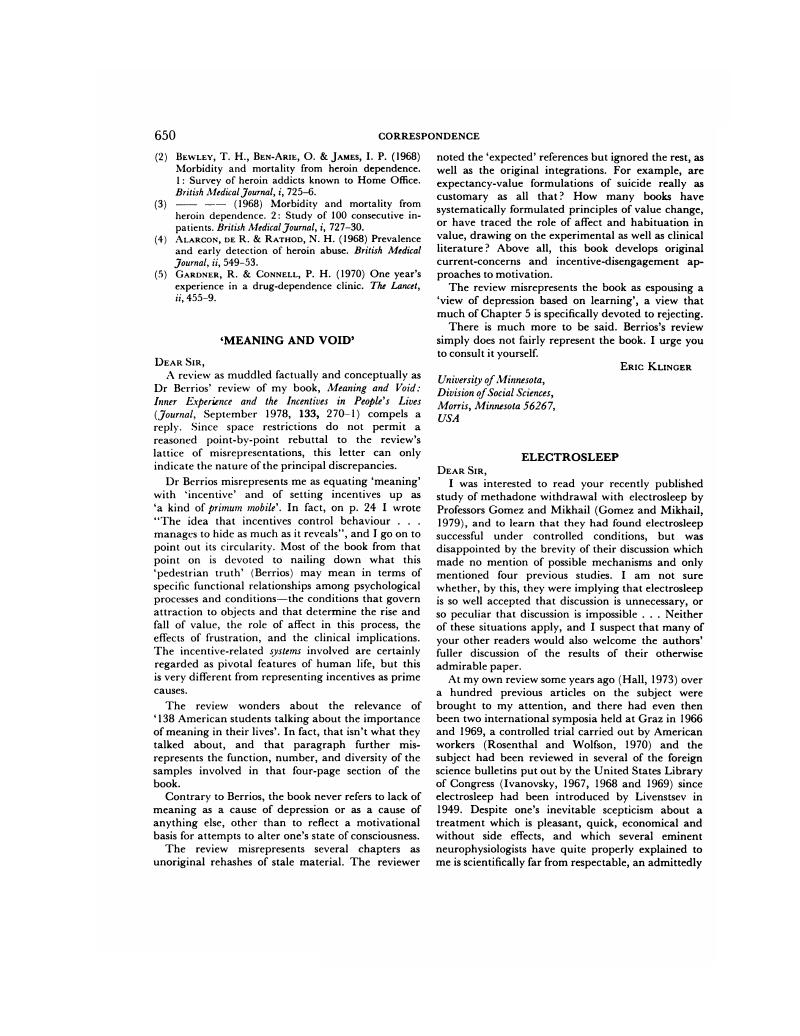No CrossRef data available.
Article contents
Electrosleep
Published online by Cambridge University Press: 29 January 2018
Abstract
An abstract is not available for this content so a preview has been provided. As you have access to this content, a full PDF is available via the ‘Save PDF’ action button.

- Type
- Correspondence
- Information
- Copyright
- Copyright © Royal College of Psychiatrists, 1979
References
Evaristo, G. & Mikhail, A. R. (1979) Treatment of methadone withdrawal with cerebral electrotherapy (electrosleep). British Journal of Psychiatry, 134, 111–13.Google Scholar
Hall, P. (1973) Electrosleep (electrohypnosis?)
British Journal of Clinical Hypnosis, 4, 19–22.Google Scholar
Hall, P. & Smith, G. A. (1974) A comparison of anxiety-relieving therapies using simple portable devices for psychophysiological monitoring. Journal of International Research Communications, 2, 1374.Google Scholar
Ivanovsky, A.
et al (1967, 1968 and 1969) Electrosleep and electro-anaesthesia. Foreign Science Bulletin (Library of Congress), 3, 46, 2, 1 and 4, 1 respectively.Google Scholar
Lippold, O. C. J. & Redfearn, C. J. (1964) A controlled trial of the therapeutic effects of polarization of the brain in depressive illness. British Journal of Psychiatry, 110, 768–72.Google Scholar
Rosenthal, S. H. & Wulfsohn, N. L. (1970) Studies of electrosleep with active and simulated treatment. Current Therapeutic Research, 12, 126–30.Google ScholarPubMed
Smith, G. A. (1977) Voice analysis for the measurement of anxiety. British Journal of Medical Psychology, 50, 367–73.Google Scholar





eLetters
No eLetters have been published for this article.